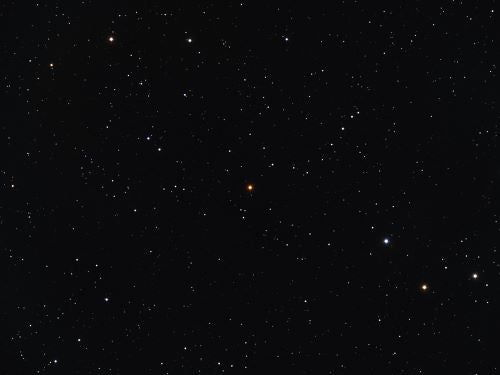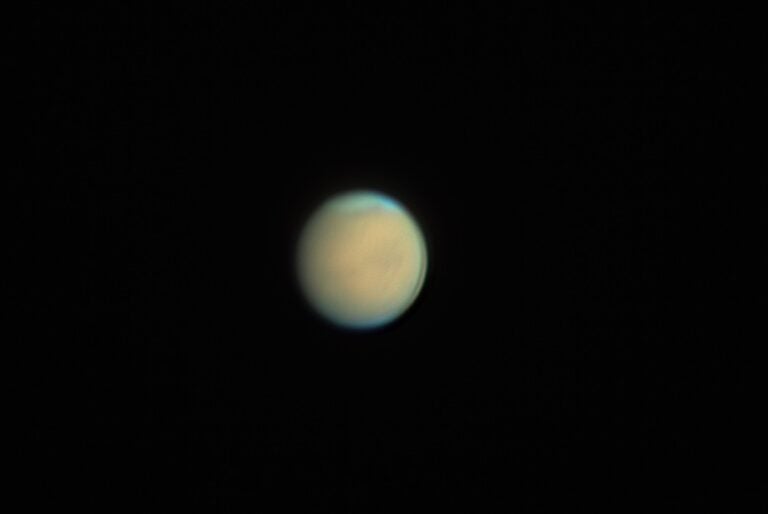We astronomers love carbon. Though nowadays it gets unrelenting bad press thanks to climate change, carbon is so essential to life that it grabs attention wherever we detect it. Who doesn’t perk up when reading about organic compounds found in comets or in martian soil, or causing the redness on Titan? Indeed, an entire field — organic chemistry — is devoted to the study of material containing carbon.
Carbon is the universe’s fourth-most abundant element. During stellar life cycles, nuclear fusion turns hydrogen into helium, and helium into carbon and oxygen. So, when reaching old age, Sun-like stars collapse into tiny balls of oxygen and carbon. If blown outward, carbon becomes lots of fun even when not creating life-forms.
We enjoy observing stars surrounded by carbon dust. Because that element scatters blue and some green light but lets red emission pass, such “carbon stars” are the reddest objects anywhere. If you ever find yourself in the deep south — not the tobacco-growing Carolinas but llama-loving Patagonia — point your scope at DY Crucis, which hugs the Southern Cross’ leftmost star. It may be the reddest thing your telescope can visually display.
As long as we’re pondering carbon, here’s a question that should drive you crazy.
Back in school, they taught us that we breathe in oxygen and breathe out carbon dioxide. But how can your body be constantly supplying that carbon for you to exhale?
Consider: Earth’s atmosphere is 78 percent nitrogen and 21 percent oxygen, which leaves a mere 1 percent for everything else. Almost all that residual stuff is the single element argon. Carbon dioxide is 20 times less prevalent than even argon. Amazingly, CO2 only comprises 1/25 of 1 percent of the air we breathe. It’s barely there at all.
With each exhale, we release a gaseous mixture that is 78 percent nitrogen, 17 percent oxygen, 1 percent argon, and 4 percent carbon dioxide. Comparing inhalations with exhalations, the nitrogen and argon concentrations have not budged because our bodies have no use for them. The big change is that oxygen has gone down by 4 percent and carbon dioxide has gone up by 4 percent.
These numbers can also solve an issue that may have troubled you: How can delivering the “breath of life” to an accident victim be helpful if we’re only breathing out useless CO2? Now you know: We’re not! The breath you give to an unconscious person has nearly as much oxygen as fresh air.
But back to our big baffling brouhaha. If we breathe in air that’s only 1/25 of 1 percent carbon dioxide and then breathe out 4 percent carbon dioxide, it means we’re introducing a steady stream of enhanced carbon into our planet’s air. Where does this carbon come from? How can our bodies possibly cough up such an unrelenting, nonstop stream of carbon when we breathe in almost none of it?
Ever wonder about this? Want to stop and guess?
The answer is … sugar.
Most of what we eat gets changed into glucose, which is then consumed by our cells. It’s also utilized by the mitochondria in each cell to supply us with energy. These tiny organelles have their own life cycles and independent genetic material, and live inside us in a symbiotic way. It has even been suggested by a panspermia advocate that perhaps mitochondria came to Earth via meteorites and comets, invaded early plant and animal bodies, and established a mutually beneficial relationship. Regardless of their origin, we supply them with a warm, safe home and they give us energy. And the raw material they use is glucose, whose chemical formula is C6H12O6. Our exhaled carbon comes from that C.
The waste products of glucose metabolism are water (H2O) and carbon dioxide (CO2). So the conclusion, little known by the public, is that every romantic sigh that escapes our lips has a sweet origin. And that sweetness, in turn, has its foundation in the stars.










